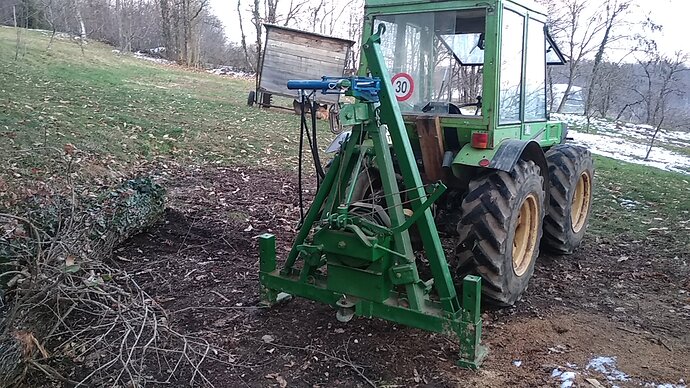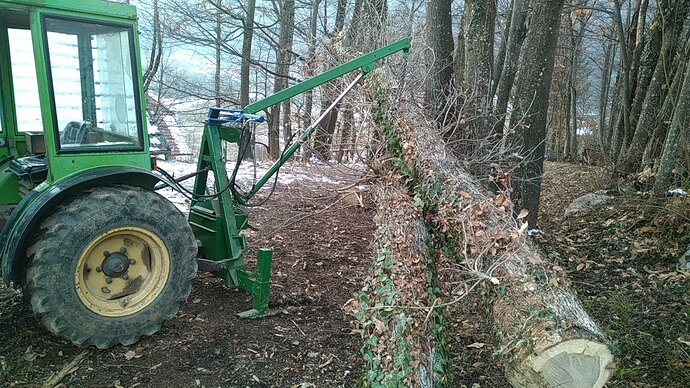I wonder if it does not say here how the Swedes did in the latest oil crisis, you may be able to translate with google, what I understand is the description of both your and my engine.
If I lower the amount of diesel to lower than idle, and put a throttle on the intake, and control the speed with the throttle, why does it not ignite the gas then at idle?
http://www.gengas.nu/byggbeskrivningar/smp/kapitel_1.shtml#2.2
Very good article link JanA.
It now currently translates thru Microsoft service 99% well.
And this article giving advice for useages down through 500cc engines has a modern benefit.
On modern passenger vehicle diesels, I am accustomed to factory engine driven vacuum pumps to supply for vacuum power brakes and some HVAC and even emissions actuators servos. Isolated from the engines lubricating oils to preserve the pump diaphragm these pumps have a high mechanical wear out failure rate.
So completely air unthrottled; most diesels have no intake engine vacuum.
I assumed Tone you are air throttling primarily to create the needed engine drawn gasifier flow, yes?
And then with this created intake engine vacuum using this as actuator signal and power for a self-regulation throttling control, yes?
And using this air control to tune in your producer gas to air best combustion ratios, yes?
Steve Unruh
In my opinion. In the picture it is better to swap the inscriptions ‘wood gas’ and ‘air’
Tone looking at your drawing you are vaccum auto regulating your wood gases. On my auto mixer I am doing the opposite. I use the vacuum to regulate my air coming in to mix a 1:1 ratio with air to wood gas. Please explain this method so it is clear to me.
Bob
But this isn’t a spark ignited engine, which uses a throttle, like you’re used to.
In this case a they are controlling the mixture. A richer mixture makes more power. It’s naturally more fuel efficient, and less sensitive to gas quality. Though top end power will still suffer if low gas quality.
Rindert
Hello friends, I drew a sketch of the regulation for Jan’s case, because the diesel fuel pump has a centrifugal speed regulator, which regulates the amount of fuel according to the load and the position requirement of the lever that prestresses the spring. A damping damper was to be installed in the suction line, which would be set in parallel with the lever for the diesel pump lever, so that information on the dosing of wood gas would be obtained. In my tractor, the diesel pump is controlled in this way, if you look closely at the clip above, you can see that it is factory made, I just need to add a diaphragm and throttle and adjust it to work similarly to diesel dosing . I will simply limit the amount of diesel fuel with the stop lever, at the beginning of the clip you can see that I released it and then started the engine, the grip at the end is screwed to the rod, so it is possible to limit the amount of diesel fuel without processing.
To continue, … in a document published by Jan, it is stated that older diesel pumps need to be renewed, which is true because the amount of fuel varies depending on the speed, at low speeds the fuel supply is lower due to leaks. The problem can be easily reduced by adding oil to the diesel fuel, I add about 30% of used oil to my diesel generator.
And a little loading, … the diesel engine always runs with excess air, only at full load all the air is burned for combustion, if we add an even greater amount of fuel, black smoke appears. If gas is added in addition to diesel fuel, it is not necessary to control the mixing ratio, it is only necessary to set a limit on the maximum amount.
Very interesting, I know nothing about diesel engines. I have never owned one.
Thank for the explanation of what you are doing.
Bob
What’s that that you have rigged up on the back of the tractor, Tone?
Probably useless information for you but the rear seat out of a 1981 Camaro fits perfectly in that seat bucket.
Fergi is working hard, the energy supply for heating and engine drive is increasing, it is now running on a mixture of 80% oil and 20% used oil, wood gas will have to wait, there is no time to build a gasifier.
Can you discuss how you prepare your used oil for use as engine fuel?
I don’t prepare used oil, I just pour it through women’s socks and mix it with diesel fuel.
“Flocculation, in the field of chemistry, is a process by which colloidal particles come out of suspension to sediment under the form of floc or flake, either spontaneously or due to the addition of a clarifying agent. The action differs from precipitation in that, prior to flocculation, colloids are merely suspended, under the form of a stable dispersion, in a liquid and are not truly dissolved in solution”
Wikipedia-
I find that water, molybdenum, and especially carbon soot, in used motor oil behave as colloidal suspensions and can be flocculated out of suspension.
I am not sure about the method. It may be the interaction with the salts produced when fatty acids are reacted with a strong base. This when 20% used engine oil is present in a biodiesel (methylester) reaction.
Other physical separation techniques are centerfuges or long-term settling in a gravity tower.
The optimal long term filtration solution for mechanical injection pumps is passing the fuel through a 1 micron filter.
Also look into the processes of Chelation and Sequestering Agents to clean up used motor oils.
Huh? Scroll down to the Industrial and Agricultural application section.
Citric acid and other needed agents are common and even can be made, locally.
Cleaning used moter oil as a fuel? Just depends on how much you want to favor the injector pump and injectors. The system when we could get small diesel clone engines from India and China into the USofA was to just buy more spare inexpensive injectors.
That’s opportunity has now gone bye-bye. I have a 7.5 hp Jang Dong sweety that sits. Very few spares on hand for it. And I personally will not hazard my 1980’s Yanmar three cylinder.
Just depends on how much you would want to clean back up to re-use as a lubrication oil.
A common oft repeated myth is that using lubrication oil in an IC engine does not change it. Only contaminate it.
Bullshit.
The lighter fractions in mineral oils are in-engine heated, vaporized away, gone bye-bye.
The longer more stable chains are changed too.
And certainly, the modern oil additives get used up and chemically bound up in engine combustion contaminates. That after all was their jobs.
Still your reclaimed oil as a lubrication oil will be better that what was used back in the 1900’s thru probably the 1950’s, even 1960’s.
Steve Unruh
Today I broke the gentleman’s day, Sunday and tested the operation of the wood gas damper vacuum control on a diesel engine.
What is the damper going to do?






